Invitations and Chat
Invitations and Chat
Meeting Invitations
In Part 1, we found that the language of certain Teams elements that are hosted in the SharePoint site depend on the user’s current site language. When it comes to invitations, the Outlook language settings of different users often have a major effect on the language of the invitation emails.
If you invite someone to a meeting from within Teams, then the language of the invitation is based on the inviter user’s Teams UI language.
If you invite someone to a meeting from within Outlook, then the language of the invitation is based on the user mailbox settings of the inviter.
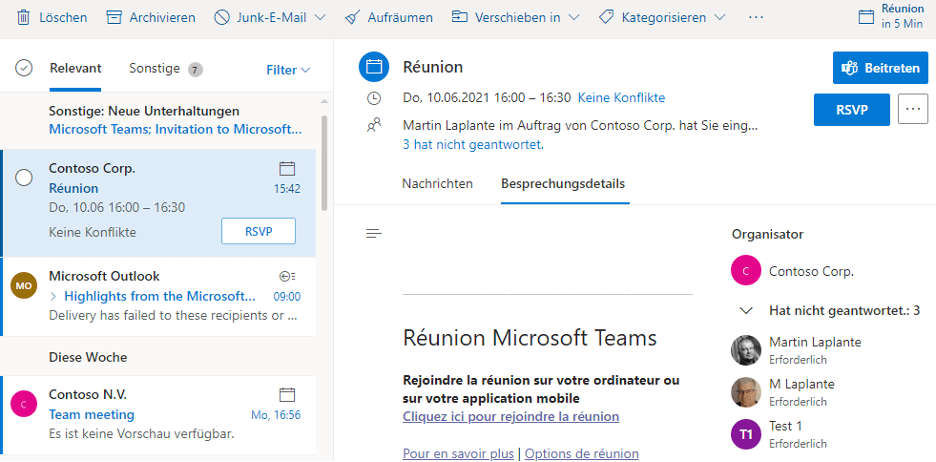
In this image, the inviter’s language is French, the SharePoint site is Dutch, the receiver is German. It is the language of the sender that determines the language of the invitation.
In this email, the text of the email is in French, at lease from “Réunion Microsoft Teams” on, because that is the language of the inviter. Some of the details at the top are in German. This is because the email has an attached ICS file, and Outlook is the one that expands the information in that file to readable format, using the user’s language.
The Teams roadmap says that soon admins will be able set a policy regarding the languages of the invitation.
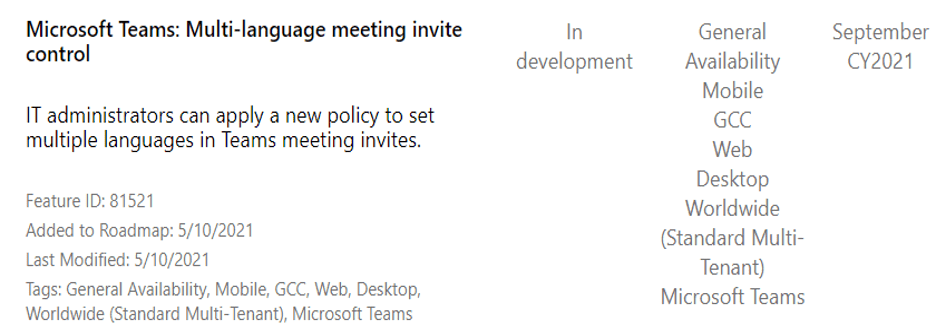
Not much information has been released about how this will work.
O365 Group Invitations
O365 Group Invitations
There are many, many different ways of creating an Office 365 group: in Outlook, in Teams, in SharePoint, and in many other products. These always create a SharePoint site for the group, and this site is created with the language of the tenant. There is an exception, when a modern Team site is created from within SharePoint and connected to a Group, you can select the site language.
The group mailbox of the group, however, typically has language of the mailbox matching that of the group’s creator. This mailbox language determines the language of group invitations, according to documentation & blogs. However, in my experience, invitations are usually in the language of the tenant. Sometimes, not always, the invitation is in the current Outlook language of the person who adds them to the group. That is to say, if I change my Outlook language from English to Spanish then invite someone else to the group, they may get the invitation in English, or they might get it in Spanish. I haven’t fully figured out the pattern. Why I get different results than others is still a bit of a mystery.
Translation of messages
Translation of messages
When you look at chat and channel messages, you usually get the option to translate individual messages to your language.
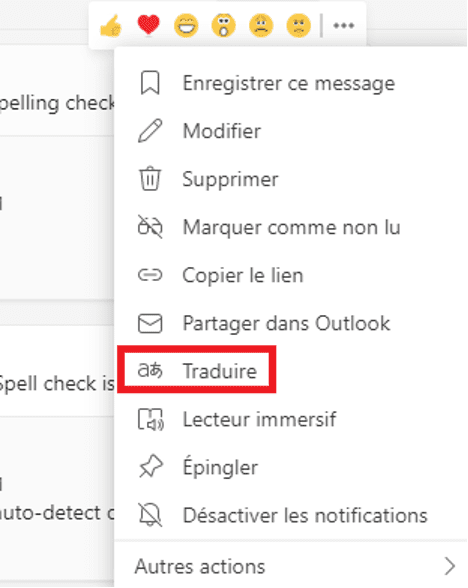
This has to be done for each message individually, not for the entire conversation. Above the message, next to the emojis you can click on the three dots and translation is one of the options.
The translation will attempt to auto-detect the source language of the message. It will translate to your Teams configured language (desktop or browser), or to the configured translation language (mobile). On both Android and IOS your UI language is not configurable, it is the same as the language of the OS, but the translation target language is configurable. On desktop and browser versions, the UI language is configurable, but the target language for translation is necessarily the same as the UI language. Channel message translation is only available on desktop, not on mobile. You can have different target languages on desktop & mobile, or on different mobile devices.
The option to translate is on by default for Teams, but that was not always the case. Admins can turn on or off the translate option by policy.
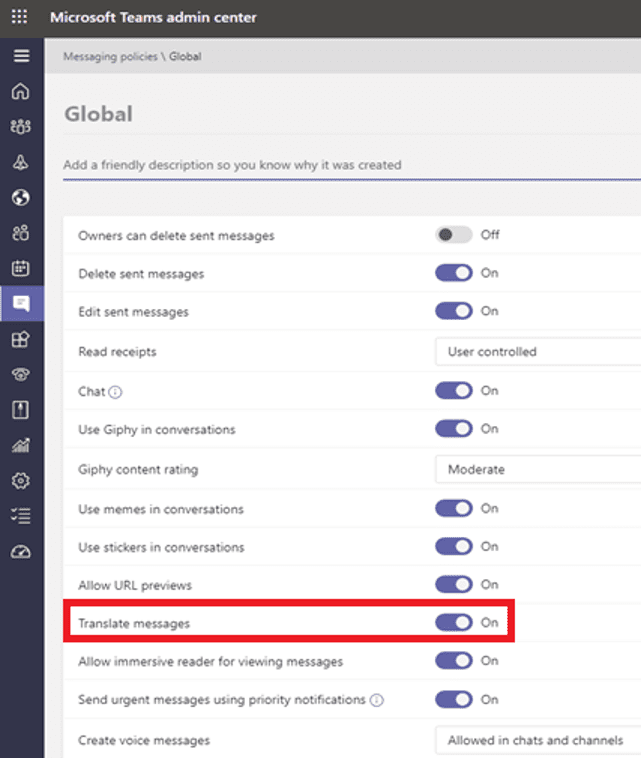
Translation can be turned on in PowerShell using the command
Set-CsTeamsMessagingPolicy -AllowUserTranslation
Alternatively, you can go to the Microsoft Teams admin center
https://admin.teams.microsoft.com/dashboard
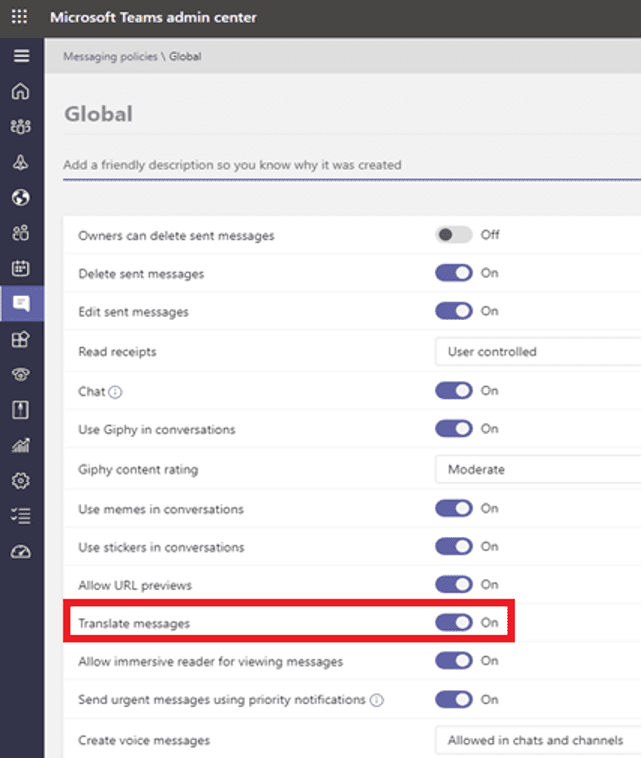
then select Messaging Policies, and turn “Translate messages” on.
Immersive Reader
Immersive Reader
Another way to translate chat and some other parts of Teams is using the Immersive Reader. Originally a tool to help people learning a second language, it is useful for many things including translation.
It can be turned on or off in Teams by policy. In the image above, it is just below the “Translate messages” setting. Among the settings that the user can set is the ability to translate to one of a ridiculous number of languages.
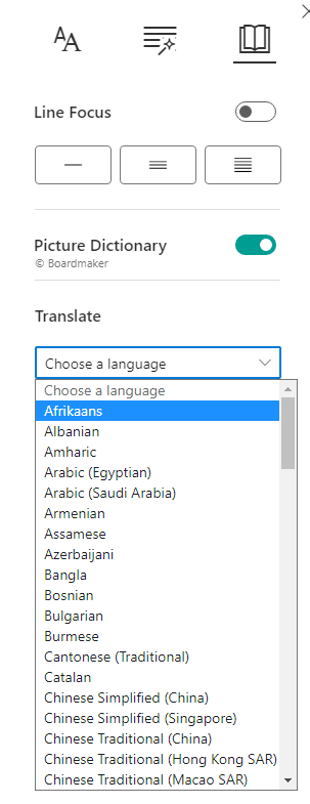
Like for translation, click on the three dots next to the emojis above the message, and immersive reader is right under the translation entry. Select the translation language and turn on “Document” translation.
The translator in Immersive Reader tries to auto-detect the language of the entire passage, then has the option to read it out loud in that language or the translation language.
This is a great language learning tool, now (soon) on mobile too.
Spell checking language
Spell checking language
As you are typing in the chat, Teams normally assumes you are typing in the app’s default language and it offers spell checking advice. If you are running on the desktop app it also looks at your Windows keyboard language for a hint.
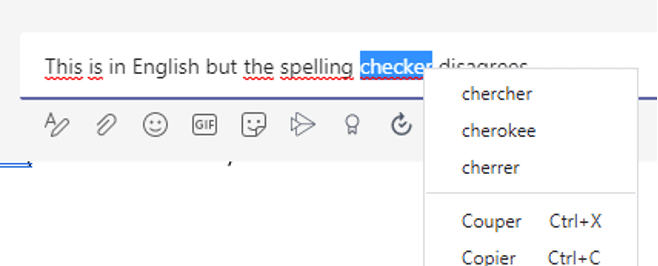
That’s good if you are typing in that language, but what if you’re not? On the Windows desktop app, after several posts it might autodetect the language you are typing in and propose to switch the spell checker to it.
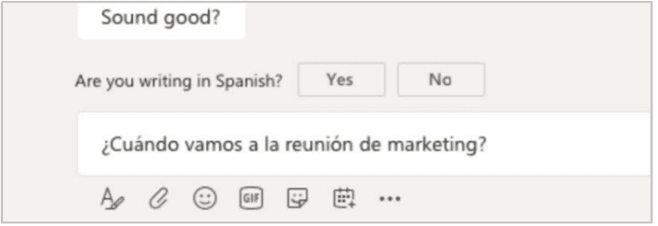
This is client-side functionality, the language detection and the spell checking on the desktop version depends on the Office installation on that machine and the language dictionaries that have been installed.
Stay tuned for part 3: Voice Translation
